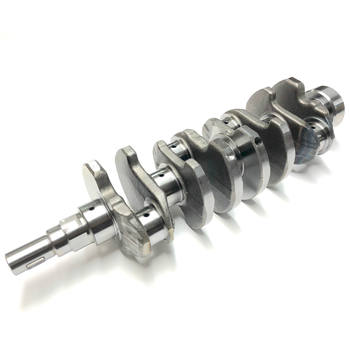Introduction
Crankshaft failure is a nightmare for engine owners and operators. Frankly speaking, the consequences can be severe and costly, ranging from reduced performance to complete engine breakdown. To avoid such scenarios, it's crucial to understand the common causes of crankshaft failure and how to prevent them. In this article, we'll explore the primary factors contributing to crankshaft failure and share practical tips for keeping your engine in top condition.
Common Causes of Crankshaft Failure
Improper Lubrication
In my experience, the leading cause of crankshaft failure is insufficient or improper lubrication. Engine oil plays a critical role in reducing friction between moving parts, including the crankshaft. When the oil isn't changed regularly or is of poor quality, it can't provide adequate protection, leading to excessive wear and eventual failure.
Overloading
Another common culprit behind crankshaft failure is overloading the engine. This happens when the engine is subjected to more power or stress than it's designed to handle. Overloading can cause the crankshaft to bend or break, particularly in high-performance or heavy-duty applications.
Poor Maintenance
Regular maintenance is key to preventing crankshaft failure. However, neglecting routine checks and services can result in several issues, such as worn-out bearings, damaged seals, or misaligned components. These problems can put additional stress on the crankshaft, increasing the risk of failure.
Manufacturing Defects
While less common, manufacturing defects can also lead to crankshaft failure. Flaws in materials, design, or production processes can result in weak points in the crankshaft, making it more susceptible to fatigue, cracking, or breaking.
Preventive Measures to Avoid Crankshaft Failure
Regular Oil Changes
First and foremost, adhere to the manufacturer's recommended oil change intervals. Using high-quality engine oil can significantly reduce wear and tear on the crankshaft and other moving parts. Additionally, consider using oil additives to enhance lubrication and protect against corrosion.
Monitor Engine Loads
Be mindful of the engine's load limits and avoid pushing it beyond its capacity. Regularly inspect the engine and its components for signs of wear or damage, and address any issues promptly.
Schedule Regular Maintenance
Stick to a consistent maintenance schedule, including routine checks of the engine's vital components. This will help identify potential problems before they escalate, ensuring the long-term health of your engine.
Address Manufacturing Defects
If you suspect a manufacturing defect, consult with a qualified mechanic or the engine manufacturer. They can assess the issue and recommend appropriate solutions, such as repair or replacement.
Conclusion
Crankshaft failure is a serious concern, but by understanding its common causes and implementing preventive measures, you can significantly reduce the risk. Regular maintenance, proper lubrication, and careful monitoring of engine loads are absolutely necessary to keep your engine running smoothly. Don't wait for disaster to strike – take action today to protect your engine and prevent crankshaft failure.




